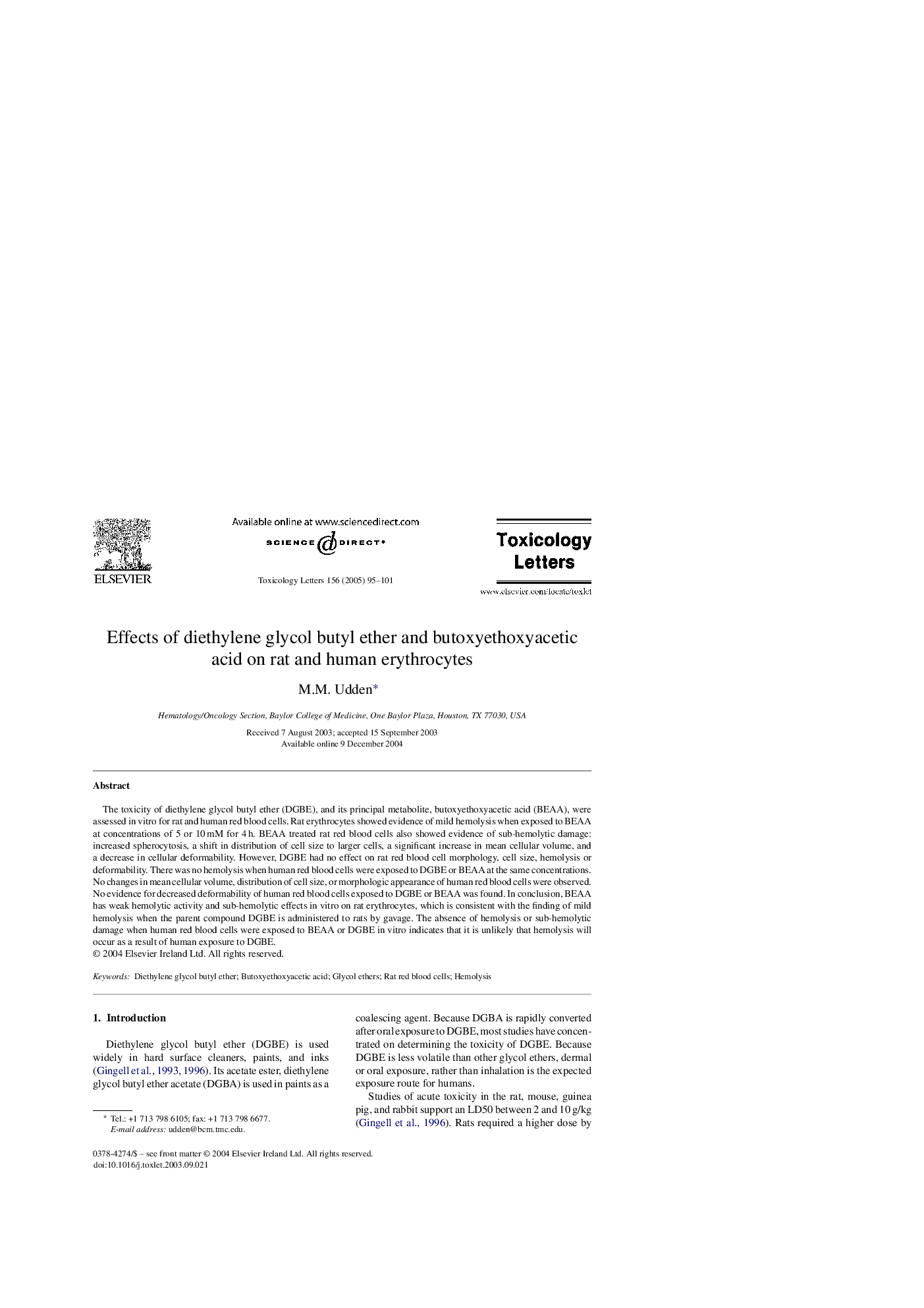| Article ID | Journal | Published Year | Pages | File Type |
|---|---|---|---|---|
| 9036836 | Toxicology Letters | 2005 | 7 Pages |
Abstract
The toxicity of diethylene glycol butyl ether (DGBE), and its principal metabolite, butoxyethoxyacetic acid (BEAA), were assessed in vitro for rat and human red blood cells. Rat erythrocytes showed evidence of mild hemolysis when exposed to BEAA at concentrations of 5 or 10Â mM for 4Â h. BEAA treated rat red blood cells also showed evidence of sub-hemolytic damage: increased spherocytosis, a shift in distribution of cell size to larger cells, a significant increase in mean cellular volume, and a decrease in cellular deformability. However, DGBE had no effect on rat red blood cell morphology, cell size, hemolysis or deformability. There was no hemolysis when human red blood cells were exposed to DGBE or BEAA at the same concentrations. No changes in mean cellular volume, distribution of cell size, or morphologic appearance of human red blood cells were observed. No evidence for decreased deformability of human red blood cells exposed to DGBE or BEAA was found. In conclusion, BEAA has weak hemolytic activity and sub-hemolytic effects in vitro on rat erythrocytes, which is consistent with the finding of mild hemolysis when the parent compound DGBE is administered to rats by gavage. The absence of hemolysis or sub-hemolytic damage when human red blood cells were exposed to BEAA or DGBE in vitro indicates that it is unlikely that hemolysis will occur as a result of human exposure to DGBE.
Related Topics
Life Sciences
Environmental Science
Health, Toxicology and Mutagenesis
Authors
M.M. Udden,
